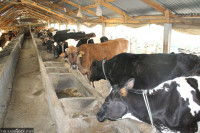Money
Footwear imports double as domestic exports stagnate
The import bill on footwear surged over two fold to Rs533 billion during the mid-July to mid-February period, mainly with a notable rise in imports from China
Krishana Prasain
The import bill on footwear surged over two fold to Rs5.33 billion during the mid-July to mid-February period, mainly with a notable rise in imports from China. The export of Nepali footwear on the other hand, plunged by 18.2 percent to Rs726.5 million over the period.
According to the statistics of the Nepal Rastra Bank, the country imported footwear worth Rs2.12 billion during the mid-July to mid-February period of 2017-18. The whopping rise in import has been attributed largely to the rise in low cost Chinese footwear.
As per the central bank’s record, the country alone imported footwear worth Rs4.47 billion from the northern neighbour in the first seven months of the current fiscal year. The import figure stood at Rs1.42 billion during the review period of 2017-18.
Krishna Kumar Phuyal, president of Footwear Manufacturers Association Nepal, said Chinese shoes are relatively cheaper than the domestic products. “The cost of domestic production has also increased massively this year with a rise in labour costs,” he said.
Traders said the fall in export of domestic footwear was due to high price of the local products. While imports of footwear have been growing at a fast pace, export numbers are stagnating, as the burgeoning middle class of Nepal today are preferring foreign goods to domestic goods, say traders. “In addition, local manufacturers have been focusing on expanding their domestic market share and putting low focus on the export market.”
The government has listed footwear as one of the major export potential goods in Nepal Trade Integration Strategy, which was revised two years ago. Manufacturers also receive cash incentive of 3-5 percent under the government’s ambitious programme. However, the product posts dismal performance against the government’s expectation.
Traders however claimed that they were not getting any cash incentive in their products’ export. “The government says it is offering the incentive only on leather made footwear,” said Phuyal. India is the major market for Nepali footwear.
According to Phuyal, the country exported an aggregate of 10.25 million pairs of shoes in 2017-18, out of which, around 7 to 7.5 million pairs of shoes were exported to India alone.
According to the association, there are around 1,500 footwear manufacturers operating across the country. An estimated Rs45 billion has been invested in the domestic footwear industry. Around 70-75 percent of the raw materials that the footwear industry requires is imported from India.
Phuyal said that the domestic demand for footwear stands at 80 million pairs of footwear annually. Of the total demand, domestic companies manufacture 40 million pairs of footwear. The footwear industry provides jobs to 50,000 people.




 19.12°C Kathmandu
19.12°C Kathmandu














